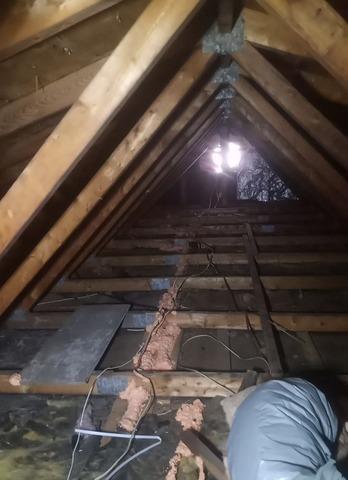
Overview of the attic before work
The attic was insulated with fiberglass and there was a lot of humidity and water infiltration in the area, so the insulation was moldy in some places.

Mold on structural wood
Due to humidity and water infiltration, mold has developed on the attic frame. Our team removes it with an effective product.

Seal the gaps
As soon as the fiberglass insulation was removed, our team sealed the gaps on the attic floor with polyurethane foam to prevent air leaks.

Ventilation mats and luminaire insulation
Our team added ventilation mats in the attic soffits to allow good air circulation and control the level of humidity in the attic. They also insulated the electrical boxes of the lights by installing insulating boxes and sealing them with polyurethane foam.

Insulation of the access hatch
The attic access hatch was insulated with rigid foam insulation to prevent air leaks in this area.

16 Inches of cellulose
Our team blew 16 inches of cellulose to achieve an R60 value, which is strongly recommended for maximum comfort and durability of the insulation.

Highly effective cellulose
Attic insulation with cellulose is very effective and much better than fiberglass. It is safe and environmentally friendly.
